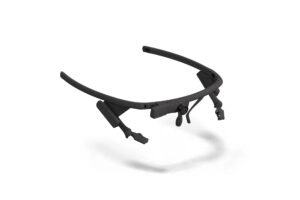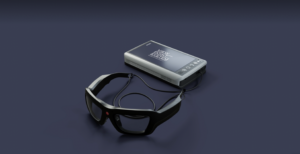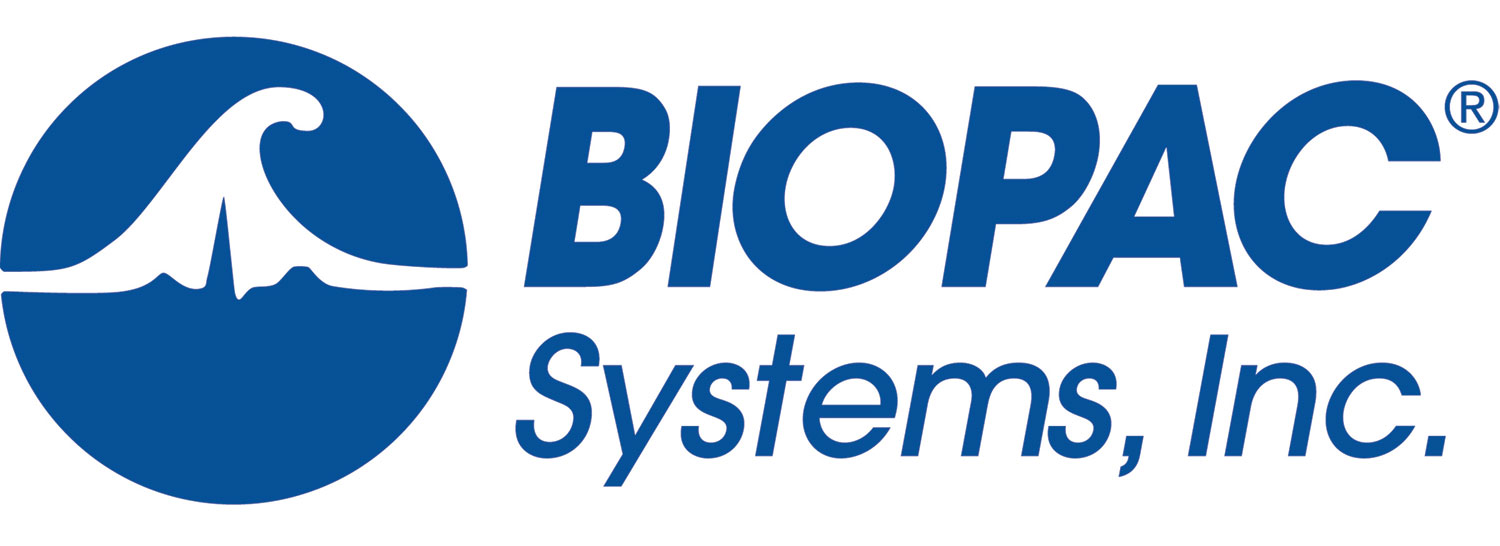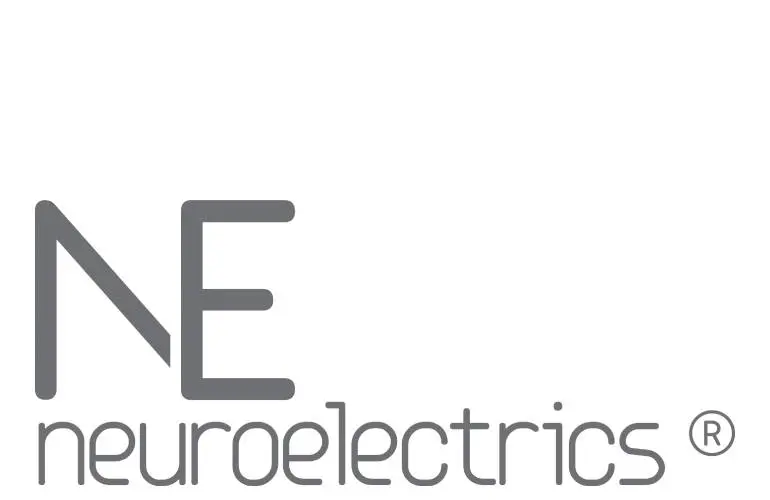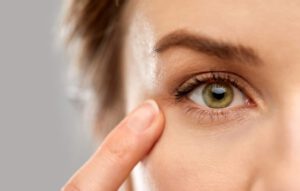State-of the-art eye tracking utilizes high performance industry cameras that detect near-infrared spectrum light, and also benefit from active illumination in that spectrum. These features work together to create a highly accurate system for eye tracking. However other options have begun to emerge and we believe in always providing the full image. In this post we will dig into the world of dedicated eye tracking hardware and webcam-based eye tracking and potentially what the future holds.
The power of infrared
The typical eye tracker is a dedicated piece of camera hardware designed and optimized for capturing eye movement in any lighting condition, and can compensate for head movement, and a wide range physiological variation of the eye region.
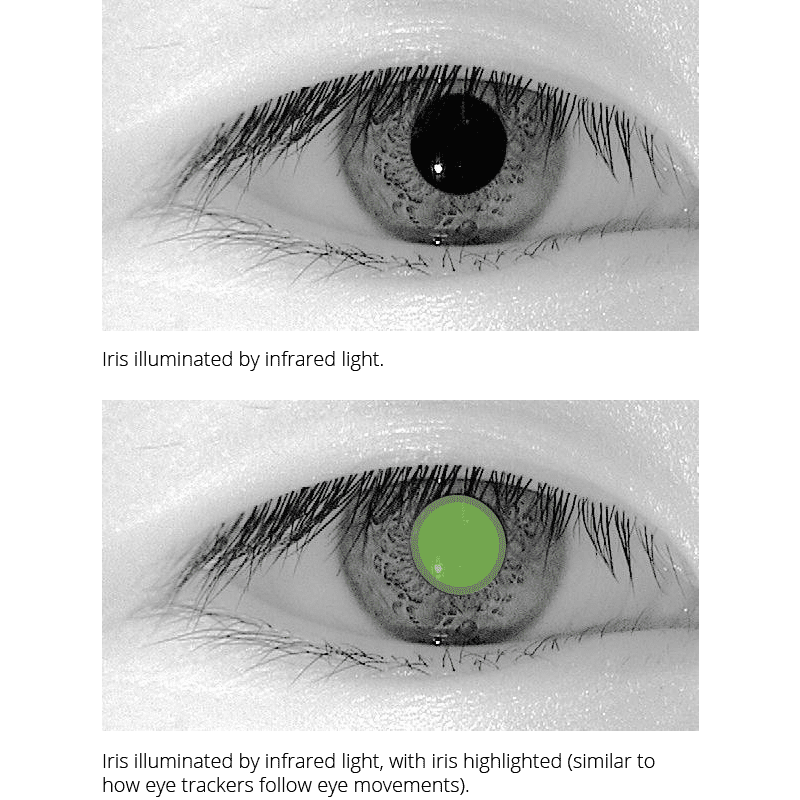
Webcam eye tracking has none of these benefits.
To begin with, webcam eye tracking essentially means getting eye tracking data from a “normal” camera – a camera that only detects light in the visible spectrum. This is because we only really need or want a webcam that operates with visible spectrum light – video conferencing in near-infrared spectrum light would be a peculiar experience.
Interested in learning more?
You have many ways to reach out to us: Free virtual demos, expert advice, and support for all your questions.
Visual spectrum, resolution, and contrast
Webcams, or consumer application cameras, are tuned for the visual spectrum and that poses some limits:
- Visual spectrum only: no benefit from near-infrared spectrum light (which allows the algorithm to accurately detect the pupil against the surrounding iris). The eye will therefore likely appear as one big blur consisting of both pupil and iris.
- Resolution: A typical webcam can record up to HD, but often with a trade-off in latency and frame rate. Lower resolution can resolve that, however the trade-off here is fewer pixels to describe the eye region. Fewer pixels means less information to extract the eye gaze from, and ultimately less accuracy and reliability.
- Contrast: because the webcam entirely depends on the ambient light condition, low lighting can result in even less accuracy, as there is less contrast to detect eye movements against the background of the face.
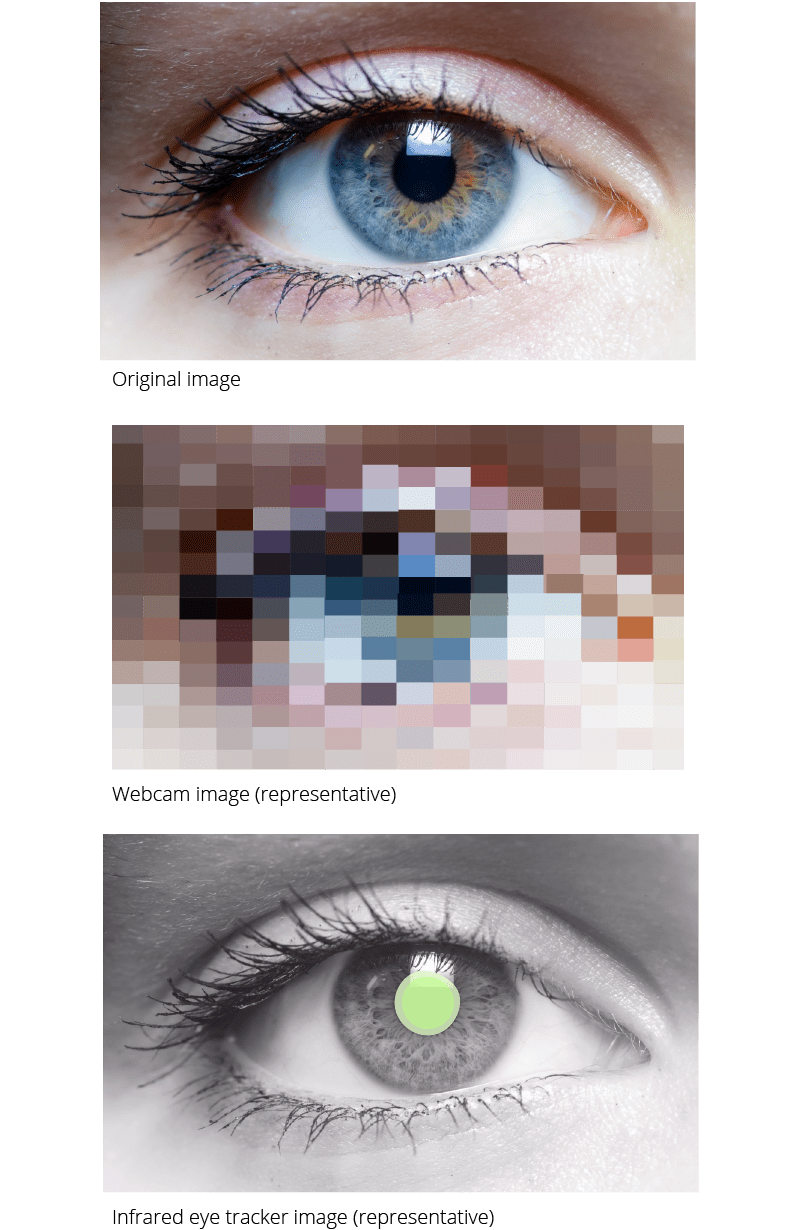
Mapping eye movement with a webcam
Assuming one is willing to accept these limitations, then how might the algorithm detect eye movements and map them onto a medium such as a computer monitor or mobile device display?
The high-level process:
- Detect location of face
- Detect location of eyes within the face
- Detect orientation of left and right eye
- Map the orientation of the eyes onto the screen coordinate system
Most methods rely on a calibration to make the mapping in Step 4. Calibration is typically done in the same way as standard eye tracking: expose a number of calibration points on the screen and ask the participant to look at those points in order to build a model.
Pros and cons of webcam-based eye tracking
Pros
- Works with cheap off-the-shelf webcams
- Can reach a huge number of people due to their ubiquity
- Can offer fast turnaround time
- Can be done at home rather than central location testing (i.e. at a lab)
Cons
- Less accurate and precise compared to infrared eye trackers
- Very sensitive to movement, requires the respondent to maintain an unnaturally steady posture throughout a recording
- Will not work well in low light conditions
- Low framerate / resolution
As such the pros provide the promise of making eye tracking a ubiquitous technology. Essentially a technology which all devices with embedded cameras could support – which today is of course virtually all personal computers and mobile devices.
For academic and commercial research there is a potential to collect visual attention data on any population, cheap and fast – just like sending out a typical online survey.
However, the downsides show that the type – and quality – of research is severely limited by the use of webcams. Further to this, the possibility of publishing research reflects the quality of the tools used, meaning that webcam-based methods need extensive review, quality assurance, and attention to respondent recruitment and yield to obtain acceptable results.
Existing webcam software solutions
A few options already exist if you’re interested in investigating them further, including the iMotions Online Data Collection Module, which was introduced as part of the iMotions suite in 2021.
iMotions Online Data Collection
iMotions Online Data Collection uses a browser interface and a participant’s own webcam to collect data from Facial Expression Analysis and Eye Tracking, which can be combined with online surveying. Data then can be processed and analyzed through the iMotions Desktop Solution, maintaining integrity without compromising full, flexible functionality. The great advantage of this solution is the ability to combine eye tracking data with facial expression analysis, which increases the accuracy with which emotion detection and visual attention can help answer your research questions.
The following options are independent of iMotions, and offer more limited analysis capabilities:
GazeRecorder – Desktop
GazeRecorder is a freeware developed by independent researcher Szymon Deja.
It works as an application that handles calibration and recording of eye tracking data and screen content. Video exports and raw data are available after recording.
Webgazer – Web Browser
WebGazer is a research project from Brown University. It is unique as it is built in Javascript and allows for embedding of eye tracking into a webpage.
EyeSee
EyeSee is a Belgian market research company that offers online solutions that incorporate facial expression analysis.
Technology of the future
Simplified components – but with near-infrared light
Before The Eye Tribe was bought by Facebook its mission was to develop robust eye tracking algorithms that can work through cheap hardware components. Their plan was not to solely rely on standard embedded cameras in devices, rather their mission was to prove that by adding only a few extra hardware components, robust eye tracking could become ubiquitous.
This ultimately meant that in addition to the already existing camera in a laptop or mobile phone, a diode providing active illumination in the near-infrared spectrum would be enough to gain the robustness needed for accurate eye tracking.
Reduced cost
Intel Realsense is a cheap hardware platform that can be purchased for a few hundred dollars and provides options to record in the non-visible spectrum as well providing a distance map for the images. Eyeware is an eye tracking startup that has developed eye tracking algorithms for these platforms.
Accuracy – through different methods
Adhawk is presenting an entirely new way to detect eye movements. Instead of using a normal camera their system relies on a MEMS scanner. The benefit is the hardware cost can be drastically reduced, and it could potentially provide very accurate measurements of the eye position.
Currently the technology mostly allows for integration into a glasses-like device, meaning that remote eye tracking with the ubiquity of webcam-based systems are not going to be immediately available.
Conclusion
Ultimately, the usefulness of eye tracking types depends on how it will be used. If the intention is simply to determine whether or not a respondent has looked at a particular quadrant of a screen, then webcam-based methods may well fulfill that. However, if greater spatial or temporal resolution is required, then infrared eye trackers will be essential.
As with all technology, the best is yet to come. Future hardware and software integrations will get even more sophisticated and will begin to compete with eye trackers. For the time being and in the foreseeable future, we strongly recommend dedicated eye tracking hardware to answer your research questions. We will actively keep monitoring the development of new solutions to deliver the best value to our clients to fulfill their research needs.
We hope that you’ve found this breakdown of webcam-based eye tracking to be helpful. If you’d like to learn more about the details of eye tracking then download our free, comprehensive guide below or contact us if you would like to know more about iMotions and our eye tracking solutions.
Eye Tracking
The Complete Pocket Guide
- 32 pages of comprehensive eye tracking material
- Valuable eye tracking research insights (with examples)
- Learn how to take your research to the next level
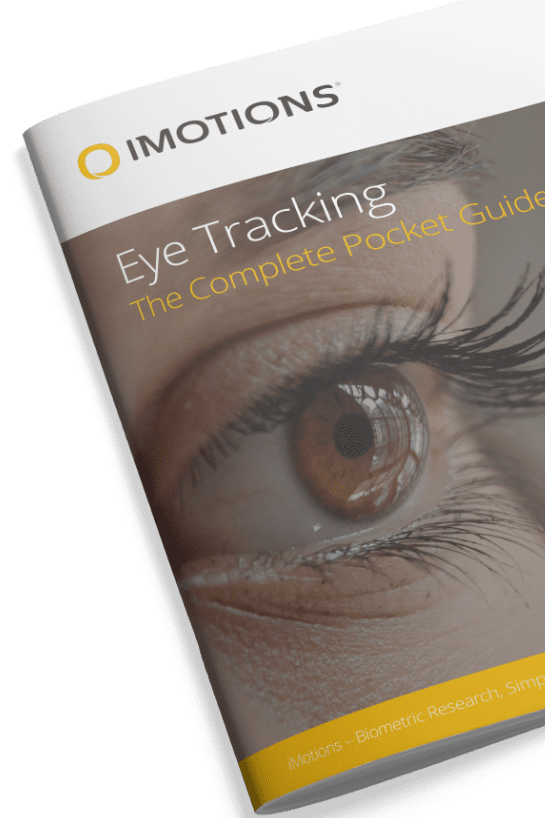
Psychology Research with iMotions
The world’s leading human behavior software
Shop for eye trackers and biosensors
We support and partner with over 20 of the world’s biggest sensor hardware companies.
Start Browsing



